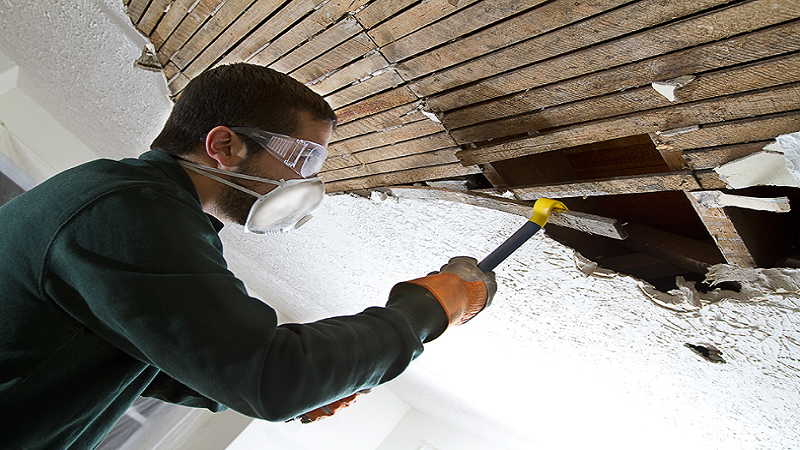Squirrels can be persistent intruders, often entering attics seeking shelter and food. Preventing squirrels in the attic starts with securing entry points and removing attractants. Properly sealing gaps in the roof, vents, and eaves can significantly reduce the chances of these agile animals finding a way inside.
In addition to sealing up potential entrances, homeowners should evaluate their surroundings. Keeping trees trimmed and bird feeders at a distance can discourage Prevent Squirrels in Attic from approaching the house. Simple landscaping adjustments can make a property less inviting to these critters.
For those already facing a squirrel problem, it’s crucial to act quickly to avoid damage to insulation and wiring. Professional squirrel removal is the most effective way to regain control of the attic. Taking proactive steps will ensure peace of mind and a squirrel-free home.
Understanding Squirrel Behavior
Squirrels exhibit specific behaviors and habits that influence their nesting choices. By recognizing these behaviors, homeowners can effectively Prevent Squirrels in Attic them from entering attics.
Squirrel Habitats and Patterns
Squirrels typically thrive in wooded areas but adapt well to urban and suburban environments. They seek out trees for shelter and food sources. They may frequently raid bird feeders or rummage through trash in metropolitan areas.
Seasonal patterns mark their habits. In late summer and fall, squirrels prepare for winter by gathering and storing food. This leads to increased activity as they search for suitable nesting locations. Attics provide a warm, sheltered environment, which becomes appealing during colder months or harsh weather.
Squirrels are also agile climbers. They can access roofs and eaves without much difficulty. To keep squirrels out of attics, homeowners should regularly inspect their roofs for entry points.
Why Squirrels Enter Attics
Squirrels enter attics primarily for nesting and shelter. The insulated space offers protection from predators and harsh weather. They often seek out warm areas to raise their young or to hibernate.
Another motivation is food storage. Squirrels are known to stash nuts and seeds in hidden places, including garages and attics, which increases the risk of squirrel activity in homes.
Homeowners should monitor for signs of intrusion, such as noise in the attic or unusual droppings. Prompt action can Prevent Squirrels in Attic further nesting. Effective measures include sealing gaps and using repellents. Understanding the reasons behind squirrel intrusion is vital to effectively keeping them out of attics.
Preventive Measures and Exclusion Techniques

Implementing effective preventive measures and exclusion techniques helps ensure that squirrels do not enter the attic. Various strategies can be employed, including securing entry points, utilizing squirrel-proof materials, and maintaining proper attic conditions.
Securing Entry Points
Identifying and securing entry points is critical in preventing squirrels from accessing the attic. Inspect the roof and eaves for gaps, holes, or damaged areas. Common entry points include:
- Gaps around vents and chimneys
- Holes in soffits
- Openings where wires enter
All identified holes should be sealed with appropriate materials, like metal flashing or steel mesh. A mesh size of 0.5 inches is effective, keeping squirrels out while allowing airflow. Regular inspections of the exterior and roof can help detect new entry points before they become a problem.
Squirrel-Proofing Materials
Using squirrel-proof materials is essential for long-lasting protection. Consider the following options when repairing or reinforcing structures:
- Heavy-duty wire mesh can cover vents and openings, providing a solid barrier.
- Metal flashing: Install this around potential entry points to Prevent Squirrels in Attic chewing.
- Sealants: Use durable, waterproof sealants for smaller gaps that can be difficult to cover with mesh or flashing.
For the best results, choose materials that resist weathering and physical damage. Investing in high-quality products will lead to more effective and long-lasting solutions.
Proper Attic Maintenance
Maintaining the attic is a vital component of preventing squirrel occupancy. The following practices should be adopted:
- Regular clean-ups: Remove food sources and nesting materials that attract squirrels.
- Proper storage: Store items in airtight containers to minimize scent and accessibility.
- Insulation checks: Ensure insulation is intact and not a source of attraction due to nesting potential.
In addition, maintaining ventilation reduces moisture, leading to deteriorating conditions. Addressing these factors can significantly decrease the likelihood of a squirrel infestation.
Addressing an Existing Squirrel Presence
Effective strategies for safe removal and thorough cleaning are essential when dealing with squirrels already in the attic. Addressing their presence involves both humane techniques for removal and repairs to prevent future access.
Safe Removal Strategies
Humane traps are among the most effective methods for removing squirrels from an attic. These traps should be placed near entry points where activity is observed. Always check traps regularly to avoid unnecessary stress or harm to the animals.
It’s crucial to follow local regulations regarding wildlife removal. In many regions, squirrel relocation may require permits. Consulting with a professional wildlife removal service ensures compliance with laws and the safe handling of the animals.
Additionally, it is important to avoid toxic poisons. These substances can harm squirrels, pets, and other wildlife. Proper education on safe removal can ensure a successful process.
Cleaning and Damage Repair
After successfully removing the squirrels, cleaning the attic is essential. Droppings, nesting materials, and food sources should be removed. Wear gloves and a mask for personal protection during this process.
Disinfecting the area with appropriate cleaner helps eliminate pathogens. Following up with a commercial disinfectant ensures thorough sanitation.Inspecting the attic for damages is also necessary. Squirrels can chew through insulation, wires, and wood. Repairing these areas prevents further structural issues and discourages new infestations.
Finally, sealing any holes or gaps is crucial. Use materials like steel mesh or hardware cloth to close entry points effectively, making it impossible for future squirrels to gain access.
Professional Assistance and Ongoing Prevention

Identifying the right time to hire professionals and maintaining effective prevention strategies are crucial for keeping squirrels out of the attic. These actions help ensure a long-term solution to this common issue.
When to Hire Wildlife Removal Services
Homeowners should consider hiring wildlife removal services when they notice signs of squirrel activity, such as hearing noises in the attic, seeing droppings, or finding chewed wires. Professional services possess the expertise and equipment to safely evict squirrels without harming them.
Timing is also essential; seeking assistance during fall or early winter can Prevent Squirrels in Attic squirrels from nesting. An expert can evaluate entry points and suggest repairs or modifications to deter future access. They may also offer a thorough inspection to identify potential nesting sites and advise on preventive measures that can be taken.
Maintaining a Squirrel-Free Attic
To maintain a squirrel-free attic, inspecting the property for potential entry points regularly is essential. Common access areas include vents, chimneys, and gaps around windows or doors. Sealing these points with metal mesh or hardware cloth can effectively block entry.
Additionally, homeowners should eliminate food sources nearby. This includes securing trash cans and removing bird feeders that may attract squirrels. Regular attic inspections for signs of nesting and droppings can help identify issues before they escalate. By combining these efforts, homeowners can significantly reduce the risk of squirrels returning.
Critter Stop has the permanent solution if you’re dealing with a squirrel invasion. Contact them at (214) 234-2616 for tailored solutions. See More













Leave a Reply